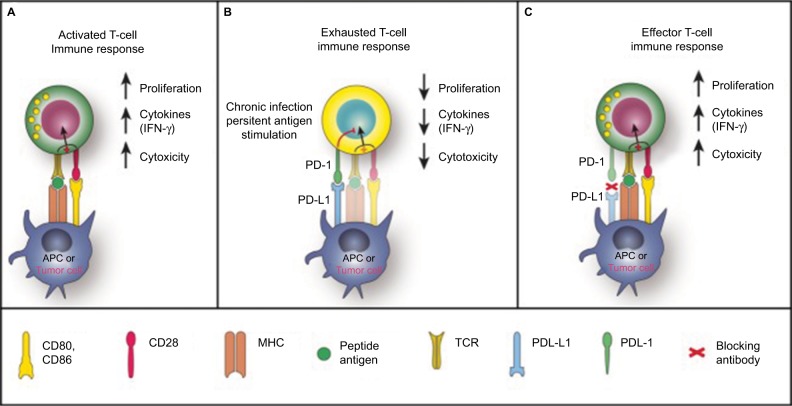Figure 1.
PD-1 in T-cell activation, exhaustion and effector function.
Notes: (A) T-cells are activated via (1) binding of MHC plus peptide on an APC to the TCR and then (2) binding of APC CD80/86 to T-cell CD28. In patients with cancer, tumor cells can also serve as APCs. Upon T-cell activation, PD-1 expression is induced. (B) In situations of chronic infection or persistent stimulation, PD-L1 signals through T-cell PD-1 to “turn off” T-cells in order to minimize damage to healthy tissue. Tumor cells can upregulate PD-L1 in order to “turn off” T-cells that might destroy them. (C) Blocking the PD-1/PD-L1 signaling pathway allows T-cells to maintain their effector functions. In patients with cancer, activated tumor-specific T-cells can kill tumor cells and secrete cytokines that activate/recruit other immune cells to participate in the antitumor response. Reproduced under Creative Commons Attribution License (CC BY), from McDermott DF, Atkins MB. PD-1 as a potential target in cancer therapy. Cancer Med. 2013;2(5):662–673. © 2013 The Authors. Cancer Medicine published by John Wiley.35
Abbreviations: APC, antigen-presenting cell; IFN-γ, interferon gamma; MHC, major histocompatibility complex; PD-1, programmed death-1; PD-L1, PD ligand 1; TCR, T-cell receptor.

